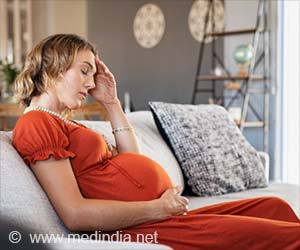The maternal supine position during pregnancy can cause a severe decrease in blood supply to the fetus
- A supine position is when a person is lying on their back
- The maternal supine position in late pregnancy is associated with significant hemodynamic changes that can result in a reduction in blood flow to the fetus //
- It is advisable to avoid supine position during pregnancy and rest in the left lateral position
STUDIES OF THE INFERIOR VENA CAVA IN LATE PREGNANCY
Go to source).
What is the Supine Position?
The supine position is one of the positions in which a person can lie on a table for a surgical procedure or a medical assessment. The individual in the supine position is lying on their back, with their face and abdomen looking upwards.What Happens When a Pregnant Woman is Supine Positioned?
When an expectant mother is positioned in the supine position, or when she lies on her back, her gravid uterus tends to compress the growing fetus's inferior vena cava. This can have a number of harmful consequences, including maternal hypotension and decreased blood supply to the fetus. Because this phenomenon is so well known, clinicians avoid placing the woman in the supine position for routine examinations and procedures, move her to the left lateral position if there are signs of foetal distress in labor, and advise her to avoid the supine position herself, at least during the day (2✔ ✔Trusted SourceIntrauterine resuscitation: active management of fetal distress
Go to source).
More recently, there has been accumulating evidence that sleeping on one's back increases the risk of stillbirth. Because of what is already known about the harmful consequences of the woman adopting this position throughout the day, this is biologically realistic (3✔ ✔Trusted Source
Sleep position, fetal growth restriction, and late-pregnancy stillbirth: the Sydney stillbirth study
Go to source).
The most important piece to the puzzle of understanding the physiology of maternal supine position and fetal response was observed by conducting a controlled experiment and monitoring both the mother and fetus during the day.
They avoided 'high-risk' women with comorbidities in this groundbreaking trial, and they also did not monitor their subjects while they slept. When compared to the same fetus spending the same amount of time with the mother lying in other positions, they had as clear a view of the human fetus's response to the maternal supine posture as is now conceivable.
It's fascinating that they discovered an increased risk of fetal quiescence in the supine position, especially since this was in a sample of healthy late third trimester pregnancies.This data demonstrates that a healthy fetus is capable of mounting an adaptive response to these potential stressors by transitioning to a lower oxygen-using condition.If this was discovered in a healthy fetus during a 30-minute supine session with the mother awake, one can only imagine what might happen in a fragile foetus whose mother sleeps supine for several hours at night.
The supine position may be harmful to foetal welfare and may be a significant stressor that causes fetal death in high-risk pregnancies. This is consistent with the "triple risk" model for stillbirth, which states that a vulnerable fetus (possibly a growth-restricted fetus) with maternal co-morbidities such as age, obesity, parity, gestational diabetes, gestational hypertension, and so on, encounters a fetal stressors such as the supine sleep position and is unable to adapt to repeated nightly exposure to this stressors and dies as a result (4✔ ✔Trusted Source
Back to basics: avoiding the supine position in pregnancy
Go to source).
Maternal Supine Position During Sleep
The vulnerable fetus's nocturnal response to the maternal supine sleep posture is a potentially modifiable risk factor for the fetus's health. It can cause some degree of cerebral redistribution in the fetus as well as operate as a causal factor in some adverse outcomes, such as stillbirth (5✔ ✔Trusted SourceSleep in the Supine Position During Pregnancy is Associated with Fetal Cerebral Redistribution
Go to source).
Is Supine Exercise Associated with Adverse Maternal and Fetal Outcomes?
Physical activity is regarded as safe and useful for pregnant women who do not have any contraindications to it. Pregnancy might be viewed as an excellent opportunity to make lifestyle changes. With the required adaptations, moderate to vigorous physical activity (MVPA) has been shown to be good for both mother and fetus in the majority of pregnancies.There is insufficient evidence to determine whether maternal supine exercise is safe or should be avoided during pregnancy (6✔ ✔Trusted Source
Is supine exercise associated with adverse maternal and fetal outcomes? A systematic review
Go to source).
It is important to note that, before recommending supine exercise, physiotherapists conduct an individual clinical evaluation of pregnant women and assess any medical hazards.
From week 19 of pregnancy, pregnant women are checked for indications of ACC syndrome. Palor, dizziness, low blood pressure, sweating, nausea, and an elevated heart rate are some of the symptoms. Symptoms that normally appear within 3–10 minutes of lying down and are alleviated by changing positions.
Women who are pregnant and have a history of heart disease, restrictive lung disease, any medical condition that causes maternal hypoxia or hypotension, a high BMI, have had numerous pregnancies, or who smoke are additionally at risk and should avoid supine exercise.
Risky fetal variables include a history of being small for gestational age, intrauterine growth restriction, and decreased foetal movements.
If any of the dangers outlined above are detected, women should avoid exercising supine lying during pregnancy and instead choose an upright posture or left-side lying.
They should be instructed to avoid resting still in the supine position and to rest in the left lateral position. There is some evidence that lifting the head 15 degrees above the feet may be beneficial. If any of the dangers indicated above are detected, it is recommended that pregnant women avoid supine activity and instead choose an alternative position, such as an upright posture.
They should be instructed to avoid resting still in the supine position and to rest in the left lateral position. There is some evidence that lifting the head 15 degrees above the feet may be beneficial. If any of the dangers outlined above are detected, women should avoid exercising supine lying during pregnancy and instead choose an upright posture or left-side lying.
They should be instructed to avoid resting still in the supine position and to rest in the left lateral position. There is some evidence that lifting the head 15 degrees above the feet may be beneficial (7✔ ✔Trusted Source
Influence of reverse Trendelenburg position on aortocaval compression in obese pregnant women
Go to source).
WHO Guidelines for Pregnancy Excercises
- Pregnant or postpartum women should do at least 150 minutes (for example, 30 minutes a day, five days a week) of moderate-intensity aerobic physical activity per week, such as brisk walking, during and after their pregnancy. It is best to spread this activity throughout the week.
- Women who already do vigorous-intensity aerobic physical activity, such as running, can continue doing so during and after their pregnancy (8✔ ✔Trusted Source
Guidelines for Physical Activity during Pregnancy: Comparisons From Around the World
Go to source). - STUDIES OF THE INFERIOR VENA CAVA IN LATE PREGNANCY - (https://pubmed.ncbi.nlm.nih.gov/14101999/)
- Intrauterine resuscitation: active management of fetal distress - (https://pubmed.ncbi.nlm.nih.gov/15321562/)
- Sleep position, fetal growth restriction, and late-pregnancy stillbirth: the Sydney stillbirth study - (https://pubmed.ncbi.nlm.nih.gov/25568999/)
- Back to basics: avoiding the supine position in pregnancy - (https://www.ncbi.nlm.nih.gov/pmc/articles/PMC5309362/)
- Sleep in the Supine Position During Pregnancy is Associated with Fetal Cerebral Redistribution - (https://www.ncbi.nlm.nih.gov/pmc/articles/PMC7356729/)
- Is supine exercise associated with adverse maternal and fetal outcomes? A systematic review - (https://pubmed.ncbi.nlm.nih.gov/30337348/)
- Influence of reverse Trendelenburg position on aortocaval compression in obese pregnant women - (https://www.unboundmedicine.com/medline/citation/26597402/Influence_of_reverse_Trendelenburg_position_on_aortocaval_compression_in_obese_pregnant_women_)
- Guidelines for Physical Activity during Pregnancy: Comparisons From Around the World - (https://pubmed.ncbi.nlm.nih.gov/25346651/)
- Management of pregnant patient in dentistry - (https://pubmed.ncbi.nlm.nih.gov/24155583/)
How Should Clinicians Examine Pregnant Women?
The ideal position of the gravid patient in the examination table and dental chair is the left lateral decubitus position with the right buttock and hip elevated by 15° (9✔ ✔Trusted SourceManagement of pregnant patient in dentistry
Go to source).
These findings undoubtedly add to the growing body of evidence that lying down during pregnancy increases the risk of stillbirth, particularly in the growth-restricted fetus.
Furthermore, we now have a better understanding of the physiology of fetal reactions to this posture.
Meanwhile, the maternity care providers need to take action not only to prevent maternal supine positions during the day, but also to warn pregnant women to avoid supine sleep positions in the third trimester of pregnancy.
References:
Source-Medindia
















